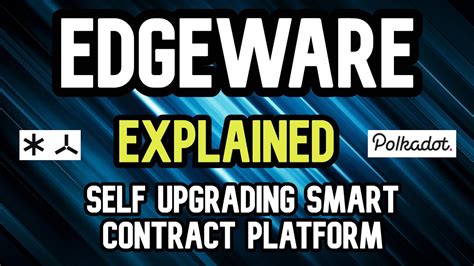ประเภทหนัง
ตัวอย่างหนัง Ethereum: Will upgrading a smart contract to inherit from a new base class cause potential storage conflicts with the UUPS proxy model?
Ethereum: Does upgrading a smart contract to adopt a new base class lead to potential memory conflicts with the UUPS proxy pattern?
When building smart contracts for the Ethereum blockchain, developers must carefully consider the impact of upgrading a contract to adopt a new base class. One such upgrade is using the UUPS (Uniswap-Upgradeable) proxy pattern. In this article, we explore whether upgrading a smart contract to adopt a new base class leads to potential memory conflicts with the UUPS proxy pattern.
What is the UUPS proxy pattern?
The UUPS proxy pattern allows developers to create custom, reusable upgrade logic for their contracts. This pattern allows for the creation of upgrades that are more modular and flexible than traditional upgrades using UIMode. The UUPS proxy pattern offers several benefits, including:
- Improved Readability
: The UUPS proxy pattern makes it easier to understand the contract’s upgrade logic.
- Increased Flexibility: The UUPS proxy pattern allows developers to create upgrades that can be easily reused across different contracts.
Inheriting from a new base class
When upgrading a smart contract to inherit from a new base class such as ERC20BurnableUpgradeable, you must consider the implications of using the UUPS proxy pattern. The UUPS proxy pattern is designed to work with upgrades that use traditional upgrade logic.
Potential Memory Conflicts
When an upgrade uses the UUPS proxy pattern and inherits from a new base class, it can lead to potential memory conflicts. These conflicts can occur when the state of the contract is not managed properly or when there are data dependencies between different parts of the contract.
For example, consider the following code:
contract MyContract is ERC20BurnableUpgradeable {
mapping(address => uint256) public totalSpent;
function addSpent(uint256 amount) internal {
// …
totalSpent[msg.sender] += amount;
}
}
In this example, the addSpent function updates the totalSpent mapping using traditional upgrade logic. However, if another contract updates the same base class and uses the UUPS proxy pattern, this can cause a memory conflict with the state of the original contract.
Resolving memory conflicts
To resolve potential memory conflicts, developers can take several steps:
- Use
UIModeinstead: Instead of using the UUPS proxy pattern, developers can use traditional upgrade logic usingUIMode. This approach is more flexible and allows for greater control over the state of the contract.
- Use a different mapping

: If needed, developers can create a separate mapping to store additional data that is not dependent on the original mapping used by the UUPS proxy pattern.
Conclusion
Upgrading a smart contract to inherit from a new base class using the UUPS proxy pattern can lead to potential memory conflicts when using traditional upgrade logic. By understanding these implications and taking steps to avoid memory conflicts, developers can create more flexible and scalable contracts for the Ethereum blockchain.
Recommendations
To avoid potential memory conflicts when upgrading to inherit from a new base class:
- Use
UIModeinstead: Consider using traditional upgrade logic instead of the UUPS proxy pattern.
- Create separate mappings: Create separate mappings when needed to store additional data that is not dependent on the original mapping used by the UUPS proxy pattern.
By following these recommendations and understanding the implications of upgrading a contract to inherit from a new base class, developers can create more flexible and scalable contracts for the Ethereum blockchain.





















